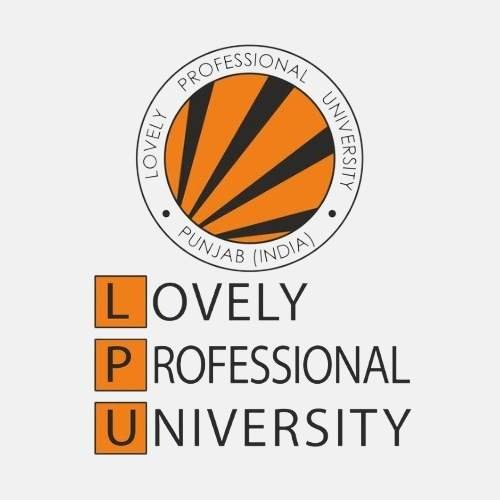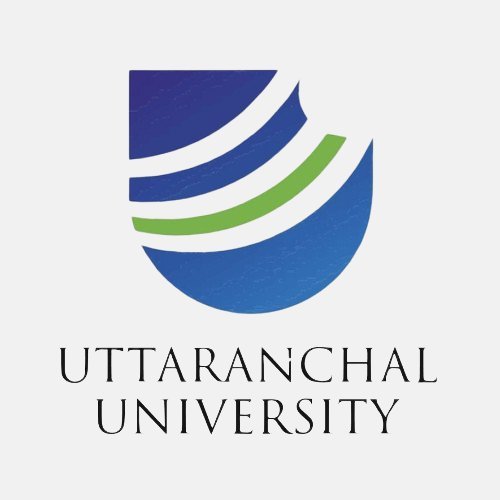Every year, many students in India take out education loans to pay for their college or university fees. Whether for engineering, medicine, MBA, or studying in another country, education loans help students continue their education without putting too much pressure on their families.
But many students still don’t know that different banks and lenders offer education loans at different interest rates. Because of this lack of information, some students end up choosing a loan that may not be the best for them. A small difference in interest rate can make a big change in how much you pay later, so it’s important to understand all the options before applying.
That’s why we have written this blog, “Education Loan Interest Rates In India”. Here, you will learn what an education loan is, which banks offer loans, how much interest they charge, and what other charges, like processing fees, you need to know.
What Is An Education Loan?
An education loan is a type of loan specifically designed to help students pay for their education-related expenses. This can include tuition fees, books, hostel fees, and even travel expenses if you are studying abroad. Unlike regular loans, education loans are meant to make higher education more affordable for students and their families.
One of the best things about education loans is that you don’t have to start repaying them immediately. Most loans come with a moratorium period, which means you don’t have to pay anything while you are still studying and sometimes even for a few months after you finish your course. After this period, you begin repaying the loan in easy monthly installments.
Types of Education Loan Providers in India
- Public Sector Banks
These are government-owned banks like the State Bank of India (SBI), Bank of Baroda, and Punjab National Bank (PNB). They generally offer lower interest rates compared to private banks and have flexible repayment options. Many students prefer public sector banks because they are reliable and offer good loan terms. - Private Sector Banks
Private banks like HDFC Bank, ICICI Bank, and Axis Bank also offer education loans with competitive interest rates. They might have slightly higher rates compared to public banks, but they often provide quicker processing and more personalized services. Private sector banks are known for their efficient customer support. - Non-Banking Financial Companies (NBFCs)
NBFCs like Avanse, InCred, and Auxilo also provide education loans, especially for students going abroad or those pursuing specialized courses. While their interest rates might be higher, they tend to offer more flexibility and quicker loan disbursal, which can be a benefit for urgent needs. - Cooperative Banks
These banks, often smaller and regionally focused, also offer education loans at competitive rates. They might be more willing to work with local students and provide loans with less paperwork, though their loan amounts could be smaller compared to bigger banks.
What Is The Processing Fee?
The processing fee is a one-time charge that banks or financial institutions take for processing your education loan application. This fee is used to cover the administrative costs involved in reviewing, approving, and disbursing the loan. It’s usually a small percentage of the loan amount.
For example, if you apply for a loan of INR 10 lakhs and the processing fee is 1%, you will be charged INR 10,000 as the processing fee. The fee can vary depending on the bank, the type of loan, and the loan amount.
Compare Education Loan Interest Rates In India In Different Banks
Bank/Company Name | Interest Rate (per annum) |
Commercial Banks | |
Punjab National Bank (PNB) | 4.00% – 12.60% |
Bank of Baroda | 7.90% – 14.25% |
Axis Bank | 9.58% – 12.75% |
HDFC Bank | 10.50% onwards |
Bank of India | 10.55% – 11.85% |
Canara Bank | 8.35% – 11.75% |
UCO Bank | 8.50% – 11.70% |
IDBI Bank | 4.00% – 11.50% |
Karnataka Bank | 10.48% onwards |
ICICI Bank | 10.25% onwards |
Kotak Mahindra Bank | Up to 16% |
Regional Rural Banks (RRBs) | |
Karnataka Gramin Bank | 10.50% – 11.50% |
J&K Grameen Bank | 10.95% – 12.20% |
Maharashtra Gramin Bank | 11.95% – 13.45% |
Kerala Gramin Bank | 10.50% – 13.60% |
Assam Gramin Vikash Bank | 9.65% – 10.15% |
Baroda UP Bank | 8.15% – 14.55% |
Baroda Gujarat Gramin Bank | 10.30% – 11.30% |
Bangiya Gramin Vikash Bank | 8.25% – 10.50% |
Arunachal Pradesh Rural Bank | 8.50% |
NBFCs | |
Bajaj Finance | 10% – 31% |
DHFL Avance | 11.5% – 13.5% |
Tata Capital | 11.5% – 13.5% |
HDFC Credila (Non-Collateral) | 11.5% – 12.5% |
HDFC Credila (Collateral) | 10.5% – 12% |
InCred (Non-Collateral) | 11% – 13% |
InCred (Collateral) | 10.5% – 12% |
Auxilo (Non-Collateral) | 13% – 14% |
Auxilo (Collateral) | 12% – 14% |
Note: For more details on interest rates, processing fees, and other terms, please visit the official websites of the respective banks or financial institutions.
What affects the Education Loan Interest Rates?
1. Type of Interest Rate
Banks offer two types of interest rates – fixed and floating.
- A fixed interest rate stays the same during the entire loan period. So your EMI will not change.
- A floating interest rate can go up or down depending on the market. It may be lower in the beginning, but it can increase later. Floating rates are usually linked to the Repo Rate or other benchmark rates.
2. Credit Score and Income
Since most students don’t earn while studying, banks check the financial background of the co-applicant, usually a parent or guardian.
- If the co-applicant has a good credit score and stable income, the bank may offer a lower interest rate.
- This shows the bank that you will be able to repay the loan on time.
3. Collateral
If you give collateral (like property, FD, or LIC policy), your interest rate might be lower. This is because the bank has some security. If you take a loan without collateral, the interest rate may be slightly higher as there is more risk for the bank.
4. Bank’s Policy and Benchmark Rate
Some banks decide their education loan rates based on benchmark rates like the Repo Rate or EBLR. They also add a small extra charge called a spread. Together, this becomes your final interest rate. Since every bank has its own rules, interest rates can vary from one bank to another.
5. Loan Amount, Tenure, and Course
- If your loan amount is high, the interest rate might also be a bit higher unless you provide collateral.
- A longer repayment period means lower EMIs, but it also means you’ll pay more total interest.
- Some banks offer better interest rates for students going to top colleges or doing professional courses like MBA, engineering, or medicine.
6. Government Schemes and Student Category
The government offers schemes like the Central Sector Interest Subsidy, where they pay your interest during the course period if you belong to an economically weaker section. Also, some students (like SC, ST, OBC, or minorities) may get a small reduction in interest rates under certain schemes.
Government Education Loan Schemes
- Central Sector Interest Subsidy Scheme (CSIS): The Central Sector Interest Subsidy Scheme is for students whose families earn ₹4.5 lakh or less per year. Under this scheme, the government pays the interest on your education loan while you are studying and for one year after your course is completed. This scheme only applies if you study in India and take the loan from a bank that follows the model set by the Indian Banks’ Association.
- Padho Pardesh Scheme (Discontinued): The Padho Pardesh Scheme was started to help minority students who wanted to study abroad. It gave interest subsidies on education loans while they were studying. However, this scheme has been stopped since 2022.
- Ambedkar Interest Subsidy Scheme: The Dr. Ambedkar Interest Subsidy Scheme is for students from OBC (Other Backward Classes) and EWS (Economically Weaker Sections). If these students want to study abroad, the government helps pay the interest on their education loan while they are studying.
What Are The Factors To Consider Before Taking An Education Loan?
- Loan Amount: The first thing you need to decide is how much money you need for your studies. The loan amount should cover all your expenses, including tuition fees, books, hostel fees, and other costs related to your education. Make sure the loan is enough but not too high, as you will need to repay it after completing your studies.
- Interest Rates: Always check the interest rates offered by different banks before you choose a loan. Even a small difference in interest rates can have a big impact on your overall repayment amount. Look for loans with lower interest rates and try to understand if they are fixed or floating rates, as each type has its advantages and risks.
- Repayment Terms: Understand how long you will have to repay the loan. The repayment tenure can vary, and it’s important to choose one that suits your financial situation. Longer repayment periods mean lower monthly payments, but you may end up paying more interest in total. Shorter repayment periods mean higher monthly payments but less total interest.
- Moratorium Period: The moratorium period is the time during which you don’t have to repay the loan. It usually lasts while you are studying and for a year after you finish your course. Make sure to check how long the moratorium period is and whether the interest is paid by the government (in case of schemes like CSIS).
- Collateral Requirement: Some loans may require you to provide collateral (like a property or FD) to secure the loan. If you can’t provide collateral, you may still get a loan, but the interest rate could be higher. Understand the requirements and whether you are comfortable with providing collateral.
- Eligibility Criteria: Different banks have different eligibility criteria for education loans. These may include academic performance, the course you are studying, and your family’s financial background. Make sure you meet the eligibility criteria before applying for the loan.
- Loan Processing Fees: Banks may charge a processing fee to handle your loan application. This fee can vary between banks, so be sure to ask about it before applying. A higher processing fee will increase the overall cost of the loan.
- Prepayment and Foreclosure Options: Check if there are any penalties for paying off your loan early (prepayment) or before the full tenure ends (foreclosure). Some banks offer flexibility to close the loan early without any penalty, while others might charge extra for this.
How to Calculate Education Loans EMI?
When you take an education loan, you have to repay it in small parts every month. These monthly payments are called EMIs, which means Equated Monthly Instalments. Each EMI includes a part of the loan amount and a part of the interest charged by the bank. Knowing your EMI in advance helps you plan your monthly expenses.
EMI Formula
Here is the formula banks use to calculate your EMI:
EMI = [P × R × (1+R)^N] / [(1+R)^N – 1]
In this formula:
- P stands for the loan amount
- R is the monthly interest rate (yearly interest rate divided by 12 and then by 100)
- N is the number of months you will take to repay the loan
Use the Education Loan EMI Calculator by MapMyCourse
You can use the Education Loan EMI Calculator by MapMyCourse to quickly find out your EMI. Here’s how you can use it:
- Go to the MapMyCourse website and find the EMI calculator.
- Enter the loan amount you want to borrow.
- Enter the interest rate given by the bank.
- Select the tenure.
- Click on the “Calculate EMI” button.
The calculator will show your monthly EMI and the total amount you will pay in the end. This makes it easier to choose a loan that fits your budget.
Check Out More Blogs
Conclusion
Education loans help many students in India study in good colleges, whether in the country or abroad. But before taking a loan, it is important to understand things like interest rates, how you will repay the money, and which loan is right for you.
Different banks offer different interest rates and rules. So, it is always a good idea to check and compare a few banks before choosing one. This will help you save money and avoid problems later. You can also use EMI calculators to see how much you will have to pay every month.
We hope this blog helped you understand education loan interest rates and how to choose the right loan. Take your time, gather the right information, and then make a good decision for your future.
Frequently Asked Questions
Q1. What is the interest rate for education loans in India?
Ans: The interest rate usually ranges from 7% to 13%. It depends on the bank, the amount of the loan, and your academic profile.
Q2. Is the interest rate fixed for the full loan period?
Ans:Some banks offer fixed interest rates, which do not change. Others offer floating rates, which can increase or decrease based on market conditions.
Q3. Do I have to pay interest during the study period?
Ans: Most banks give a moratorium period during which you don’t need to pay EMIs. But interest may still be added during this time.
Q4. Can I get a lower interest rate on an education loan?
Ans:Yes. If you have good marks, offer collateral, or apply under a government scheme, you may get a lower interest rate.
Q5. Which bank offers the lowest education loan interest rate?
Ans:The interest rates change often. Banks like SBI, HDFC, and Axis Bank offer competitive rates. It is best to compare them before applying.

















